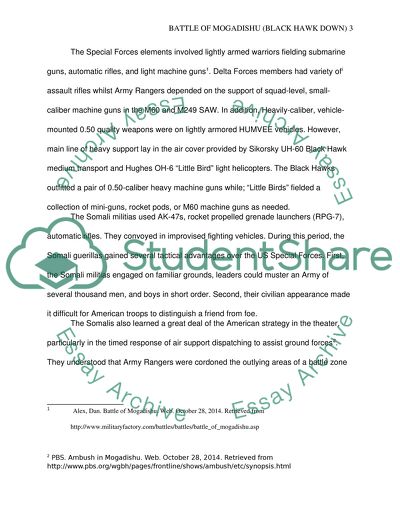Cite this document
(“Battle of Mogadishu (Black Hawk Down) Essay Example | Topics and Well Written Essays - 1000 words”, n.d.)
Battle of Mogadishu (Black Hawk Down) Essay Example | Topics and Well Written Essays - 1000 words. Retrieved from https://studentshare.org/military/1662912-battle-of-mogadishu-black-hawk-down
Battle of Mogadishu (Black Hawk Down) Essay Example | Topics and Well Written Essays - 1000 words. Retrieved from https://studentshare.org/military/1662912-battle-of-mogadishu-black-hawk-down
(Battle of Mogadishu (Black Hawk Down) Essay Example | Topics and Well Written Essays - 1000 Words)
Battle of Mogadishu (Black Hawk Down) Essay Example | Topics and Well Written Essays - 1000 Words. https://studentshare.org/military/1662912-battle-of-mogadishu-black-hawk-down.
Battle of Mogadishu (Black Hawk Down) Essay Example | Topics and Well Written Essays - 1000 Words. https://studentshare.org/military/1662912-battle-of-mogadishu-black-hawk-down.
“Battle of Mogadishu (Black Hawk Down) Essay Example | Topics and Well Written Essays - 1000 Words”, n.d. https://studentshare.org/military/1662912-battle-of-mogadishu-black-hawk-down.


